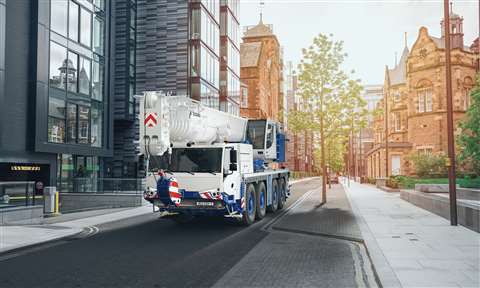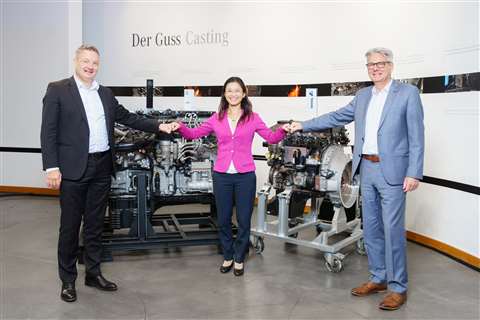Tadano extends application of Rolls-Royce mtu engines
22 March 2022
 All-terrain cranes, such as the Tadano AC4110 will now use mtu engines Photo: Rolls-Royce Power Systems
All-terrain cranes, such as the Tadano AC4110 will now use mtu engines Photo: Rolls-Royce Power Systems
German crane manufacturer Tadano is to increase the number of Rolls-Royce mtu engines used across its product ranges.
The mtu engines will now feature on the company’s all-terrain cranes. Expansion of the existing partnership will see about 3000 mtu engines and Daimler transmissions delivered through the end of 2025.
Most of Tadano’s 26 crane models, with two to nine axles and payloads from 45 to 700 tonnes, are already powered by in-line mtu Series 1000, 1100, 1300 and 1500 engines. These deliver power outputs from 129 to 140 kW.
Mtu engines already feature in Tadano crawler cranes, which offer payloads up to 3200 tonnes.
The Stage 5-complaint engines are said to offer low running costs, high reliability and good power-to-weight ratio. In addition, the broad application of mtu engines across the Tadano ranges is said to help streamline related customer services.
 Executives (left to right) from Daimler Truck, Rolls-Royce Power Systems and Tadano celebrate new agreement Photo: Rolls-Royce Power Systems
Executives (left to right) from Daimler Truck, Rolls-Royce Power Systems and Tadano celebrate new agreement Photo: Rolls-Royce Power Systems
Rolls-Royce Power Systems is continuing its transformation to a provider of sustainable, integrated drive and power generation solutions. Supported by the ‘Net Zero at Power Systems’ programme, it is shifting towards a range of climate-neutral solutions.
As part of this, engines supplied to Tadano are certified for use with sustainable fuels, supporting a net-zero emissions balance.
STAY CONNECTED




Receive the information you need when you need it through our world-leading magazines, newsletters and daily briefings.
POWER SOURCING GUIDE
The trusted reference and buyer’s guide for 83 years
The original “desktop search engine,” guiding nearly 10,000 users in more than 90 countries it is the primary reference for specifications and details on all the components that go into engine systems.
Visit Now
CONNECT WITH THE TEAM










